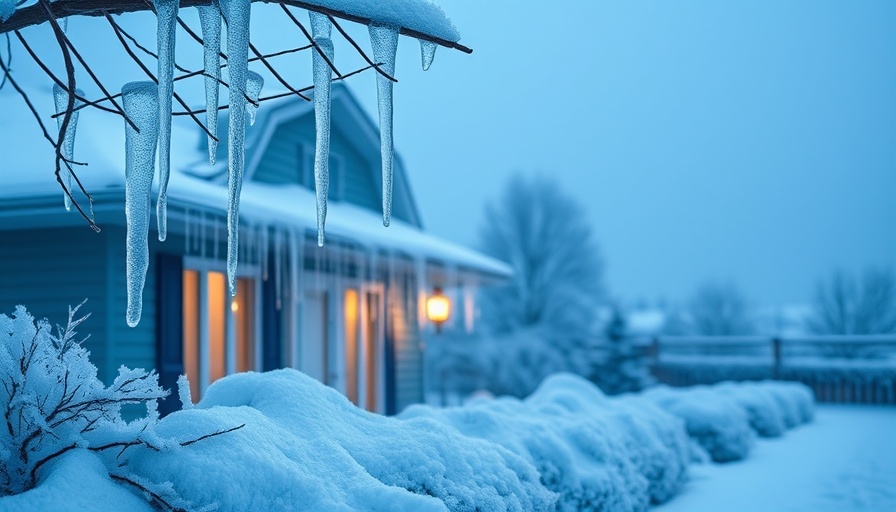
Keeping Your Home Cool in a Warming World
As summers grow increasingly sweltering, efficient cooling solutions become more imperative for homeowners. Research from the Urban Health Collaborative at Drexel University confirms that rising summer temperatures aren't just a trend; they are an undeniable reality. For many, an air conditioning unit is a go-to option for maintaining comfort during the hot months. However, with escalating energy costs, many are left wondering how to keep their homes cool without incurring hefty bills. Experts like Uri Pearl suggest numerous strategies that can help homeowners beat the heat while being economical.
1. Insulation: Your First Line of Defense
One of the most effective long-term solutions for maintaining a comfortable indoor temperature is the addition or upgrade of insulation. According to home insulation specialist Pearl, "Adding insulation can help lower energy bills and keep your home more consistently comfortable." This improvement minimizes thermal exchange at walls, windows, and ceilings, effectively reducing the burden on air conditioning systems. Not only does insulation keep homes cooler in summer, it also retains warmth during winter, delivering year-round efficiency.
2. Airflow Alchemy: Harnessing Fans Effectively
Utilizing ceiling fans strategically can create a refreshing breeze and improve overall comfort. Make sure they run counterclockwise to push air down, providing a cooling effect. Pearl also recommends using exhaust fans in kitchens and bathrooms to eliminate hot air post-cooking or showering. Moreover, pointing box fans out of windows can help draw in cooler nighttime air, enhancing the overall ventilation in your home.
3. Timing is Everything: Avoiding Heat-Generating Appliances
Large appliances contribute significantly to indoor heat levels. Phil Bickel, a heat pump specialist, suggests that homeowners cook during cooler evening hours when temperatures drop. Opting for outdoor grilling can not only keep your home cooler but also enhance your summer dining experience. Additionally, drying clothes outside instead of using a dryer can also help maintain lower indoor temperatures while saving energy costs.
4. Embrace Night Air: The Night-Flush Technique
Taking full advantage of cooler evening temperatures is essential for minimizing indoor heat. By opening windows at night, homeowners can facilitate cross-flow ventilation. This technique, known in building science as "night-flush ventilation," allows cooler air to circulate and prepares the home for a refreshing start the following morning. If bugs are a concern, installing screens or using fans directed out can serve as effective deterrents.
5. Shielding from the Sun: Blocking Direct Sunlight
One of the simplest yet most effective ways to keep your home cool is by blocking direct sunlight. Installing reflective blinds or shades can drastically reduce heat from sun exposure. Planting trees or using outdoor structures to block sunlight can create pleasant shaded areas that lower your home’s interior temperature naturally.
6. Smart Landscaping: Nature’s Cooling Agents
Strategically planting trees, shrubs, or even vines can significantly impact your home's temperature. Planting deciduous trees on the south and west sides of your home provides shade during the hottest months, while allowing sunlight to warm your house during winter, combining aesthetics with energy efficiency. This type of landscaping not only enhances the visual appeal of your home but also provides natural cooling.
Conclusion: Take Charge of Your Comfort
Cooling your home during increasingly hot summers doesn’t have to result in soaring energy costs. By applying these expert tips, homeowners can create a more comfortable living environment without constantly relying on air conditioning. Utilizing these methods not only conserves energy but also enhances your home’s value and sustainability. Embrace these strategies, and transform your space into an environmentally friendly summer retreat!
 Add Row
Add Row  Add
Add 



Write A Comment